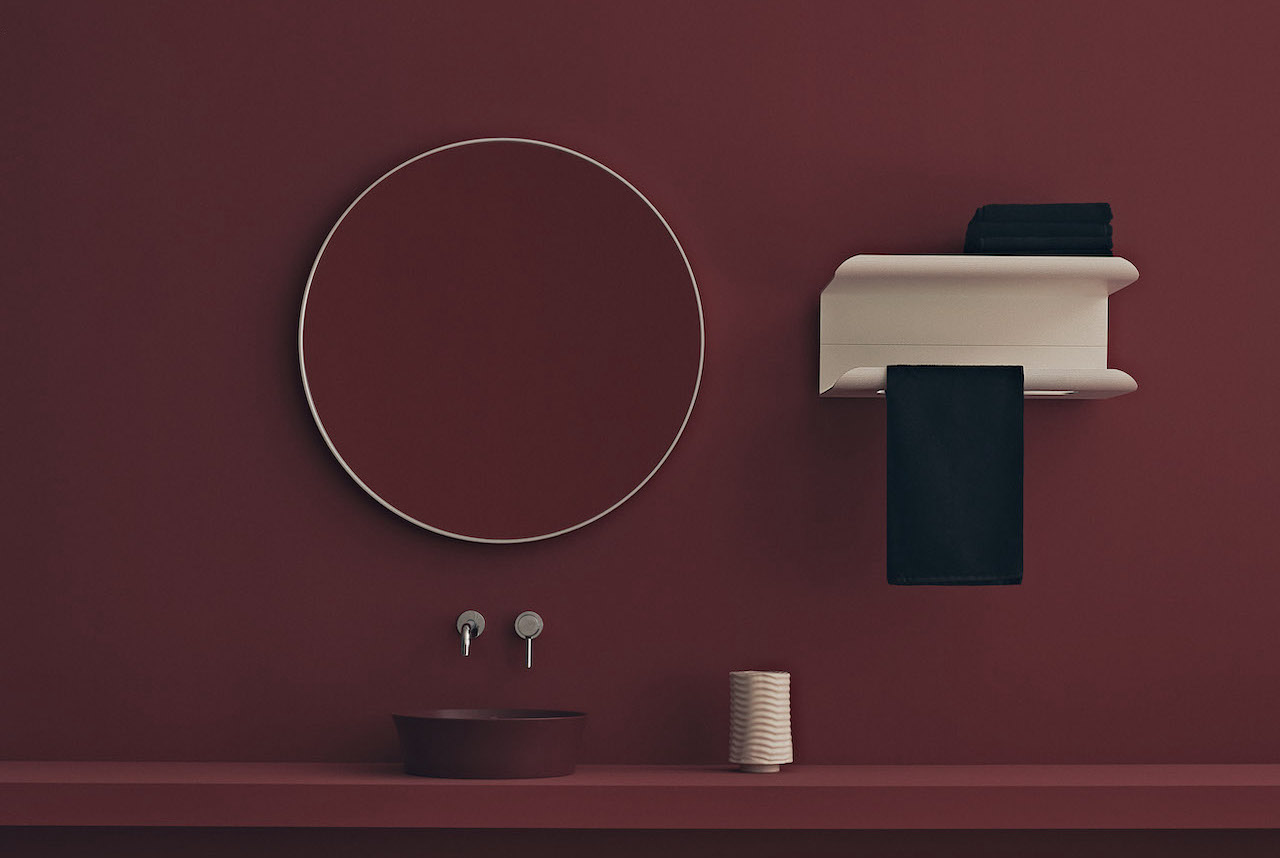Nothing says luxurious comfort like a freshly warmed towel available right out the shower. However, most consumers only experience this level of comfort on vacation at hotels or upscale B&Bs. Towel warmers in residential spaces often take up too much floor, counter, or wall space. If only there were a modern solution… Enter the JJ design by Ludovica Serafini and Roberto Palomba for Italian radiator brand Tubes. Inspired by American artist Donald Judd, the JJ boasts an elegant and streamlined silhouette. Its name derives from its side profile, which reveals two ‘J’ shapes from the horizontal shelves. Unlike other towel warmers with singular functions, the JJ also doubles as a storage organizer and hanger for drying wet towels, thanks to an unseen slot carved into the bottom shelf.

“The inspiration for JJ arises from the desire to design a minimalist heating body, clearly influenced by Donald Judd’s vision, which thus assumes an extraordinary architectural value within the space in which it is placed. In the project, iconicity and functionality merge, as is customary in our projects,” says Ludovica Serafini + Roberto Palomba.



The JJ is truly the towel warmer of the future, capable of integration into home automation systems. Users can control temperature and schedule programs via Wi-Fi and voice assistants using their smart devices or Tubes’ new thermostat, ensuring a freshly warmed towel is always just a tap or command away. And thanks to its low voltage, JJ can be installed in wet spaces, like a walk-in shower or by a bathtub.

Beyond its functional capabilities, the JJ satisfies a design lover’s checklist with its its aesthetically-pleasing fluted surface and plethora of color options – 140 shades, to be exact. Additional options include three sizes, open and closed slots on the bottom shelf, and left- or right-sided slots. These various configurations make it easy to incorporate the JJ into residential homes, hotel rooms, or wellness spas.




To learn more about the JJ radiator, visit tubesradiatori.com.
Art direction by Studio Palomba Serafini.
Photography by Carlo William Rossi and Fabio Mureddu.

